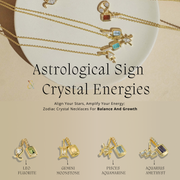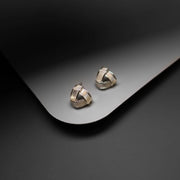What Is Alexandrite?
Alexandrite is an exceptionally rare variety of the mineral chrysoberyl (chemical formula: BeAl₂O₄), prized for its dramatic color-changing ability. Discovered in 1830 in Russia’s Ural Mountains, it was named in honor of Tsar Alexander II. Alexandrite’s defining feature is its ability to shift colors under different lighting conditions: appearing emerald-green to blue-green in daylight and transforming into raspberry-red or purple under incandescent light. This phenomenon, combined with its scarcity, makes it one of the most coveted and valuable gemstones in the world.
Key Characteristics
-
Hardness: 8.5 on the Mohs scale.
Alexandrite’s exceptional hardness makes it highly resistant to scratches, ideal for daily wear in rings or bracelets. For comparison, diamonds rank 10 on the Mohs scale, while sapphires and rubies are 9. This durability ensures alexandrite jewelry retains its polish and brilliance over decades. -
Refractive Index: 1.746–1.755.
The refractive index measures how light bends as it passes through the gem. Alexandrite’s high refractive index contributes to its sharp brilliance and lively sparkle, rivaling that of sapphires. -
Pleochroism: Displays three colors (green, orange, purple-red) from different angles.
Pleochroism is distinct from color change. While color change depends on the light source, pleochroism refers to shifts in hue when viewed from different angles. Alexandrite’s pleochroic nature adds depth to its appearance, making it a favorite among gem collectors. -
Rarity: More valuable than diamonds; high-quality specimens exceed $70,000 per carat.
*Natural alexandrite is rarer than diamonds, with significant deposits depleted in the 20th century. Most stones under 1 carat are considered “small,” and those over 5 carats are museum-worthy.*

Photo by TheGemShop
What Color Is Alexandrite? The Science Behind Its Magic
Alexandrite’s color-change effect is one of nature’s most mesmerizing optical phenomena. Here’s how it works:
-
Chromium (Cr³⁺): The trace amounts of chromium in its crystal structure absorb specific wavelengths of light.
In natural daylight (rich in blue-green wavelengths), the stone appears green. Under incandescent light (rich in red wavelengths), the chromium absorbs differently, causing a shift to red or purple. -
Crystal Field Theory: Explains how the gem’s atomic structure interacts with light.
The arrangement of atoms in alexandrite’s lattice creates "energy gaps" that filter light differently depending on the source. This unique interaction is why the color change is so pronounced and sought after.
Color Grading Scale
| Light Source | Color Appearance | Quality Indicator |
|---|---|---|
| Daylight | Green, Blue-Green, Teal | Pure green hues (reminiscent of fine emeralds) are most valuable. Any brown or gray undertones reduce desirability. |
| Incandescent | Red, Purple, Raspberry | Vivid reds (similar to rubies) indicate premium quality. Muted or orange-red tones lower the grade. |
| Transition | Partial yellow/brown tones | Residual hues during color transition signal impurities or lower chromium content. Top-tier alexandrite shows a clean, complete shift. |
Note: The finest alexandrite exhibits a 100% color shift (e.g., green to red) with no residual hues. Stones with partial shifts (e.g., teal to pink) are less valuable.
Where Is Alexandrite Found? Global Sources
1. Russia (Ural Mountains)
-
Original Source: Discovered in 1830 near the Tokovaya River.
Russian alexandrite set the standard for quality, with its iconic “emerald by day, ruby by night” shift. These stones are now nearly extinct, with most surviving examples in museums or private collections. Antique Russian pieces can fetch over $1 million per carat at auction. -
Characteristics:
-
Daylight Color: Grass-green to bluish-green.
-
Incandescent Color: Vivid raspberry-red.
-
Clarity: Often included with rutile needles or liquid-filled cavities.
-
2. Brazil (Minas Gerais, Hematita)
-
Modern Supply: Accounts for 80% of today’s commercial alexandrite.
*Brazilian alexandrite tends to show a teal-to-purple shift, with some stones exhibiting a moderate red hue under incandescent light. While less intense than Russian material, high-quality Brazilian gems can still command 50,000 per carat.* -
Mining Challenges:
Most Brazilian deposits are small-scale, with miners using hand tools to extract gems from hard rock. This labor-intensive process contributes to the stone’s high cost.
3. Sri Lanka, Tanzania, India
-
Secondary Sources: Produce smaller, less vibrant stones.
Sri Lankan alexandrite often has a yellowish or brownish undertone, reducing its market appeal. Tanzanian stones are typically small (under 0.5 carats) but can show a clean color change.
4. Lab-Created Alexandrite
-
Flux-Grown or Czochralski Method:
*Lab-created alexandrite has the same chemical composition as natural stones but lacks rarity. Prices range from 500 per carat, making it an affordable alternative. Always insist on a gemological certificate to confirm origin.*

Alexandrite Value: Pricing Factors
Alexandrite’s worth depends on four critical criteria:
1. Color Change Intensity
-
Exceptional: 100% shift (e.g., green ↔ red) – $50,000+/carat.
Stones with a complete, vivid color shift are called “classic alexandrite” and are primarily Russian. These are almost exclusively found in vintage jewelry or high-end auctions. -
Moderate: Partial shift (e.g., teal ↔ pink) – 20,000/carat.
Most modern Brazilian stones fall into this category. They are popular in contemporary jewelry but lack the prestige of Russian gems.
2. Clarity & Cut
-
Eye-Clean: No visible inclusions; step or oval cuts maximize color.
Inclusions like fractures or clouds reduce transparency and value. However, some stones feature “silk” (rutile needles) that create a cat’s eye effect, increasing their rarity. -
Cut Quality:
Skilled cutters orient the gem to highlight its color change. Poorly cut stones may appear muddy or show uneven color.
3. Carat Weight
-
Natural Stones: Rarely exceed 1 carat; 5+ carats = museum-grade.
The largest known natural alexandrite, the “Whitby Crystal,” weighs 17.08 carats and is valued at over $4 million. -
Lab-Grown: Available in larger sizes but fractionally priced.
4. Origin
-
Russian: Most valuable due to historical significance.
Provenance is key—documented Russian stones can sell for 3–5x more than Brazilian gems of similar quality. -
Brazilian: High-quality alternatives at lower prices.
Alexandrite in Jewelry: Timeless Elegance
Popular Designs
-
Solitaire Rings:
A solitaire setting (e.g., prong or bezel) showcases the color change. Pairing alexandrite with diamonds enhances its mystique. -
Vintage-Inspired Pendants:
Edwardian or Art Deco designs emphasize its old-world charm. Look for filigree or milgrain details. -
Accent Stones:
Small alexandrites are used alongside sapphires or emeralds in high-end pieces.
Buying Tips
-
Certification: Ensure a Gemological Institute of America (GIA) report.
-
Light Testing: Verify color shift under both natural and artificial light.
-
Ethical Sourcing: Avoid conflict-zone stones; opt for reputable dealers.
Metaphysical Properties & Symbolism
-
Transformation:
Alexandrite symbolizes adaptability and balance, mirroring its color shift. It’s believed to help wearers embrace change and overcome challenges. -
Creativity:
Associated with the crown and third eye chakras, it’s said to enhance intuition and artistic vision. -
Good Fortune:
In Russian folklore, it’s called the “stone of good omen,” believed to bring prosperity and protect against illness.
Caring for Alexandrite Jewelry
-
Cleaning:
Use warm soapy water and a soft brush. Avoid steam or ultrasonic cleaners, as heat can damage inclusions. -
Storage:
Store separately in a fabric-lined box to prevent scratches from harder gems like diamonds.







